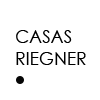Boca de estómago
Boca de estómago – Mouth of Stomach
The mouth, limited by the lips, is an aperture of the face that can open and close to allow things to enter or exit. This opening is filled by the tongue and saliva. From its innards emerges the first breath, first cry, first scream, “a first mimic whose future is a thought,” and afterwards a voice that will eventually transform into language. From the moment we are born, the mouth allows us to create relationships and establish contact with others; through the mouth and the voice emerging from within, we are able to define our existence in the world.
The stomach—a bag-shaped organ of the digestive system where the transformation of food takes place—is not only linked to the intestine—called the second brain due to the millions of neurons that control it—but is also intimately connected to the brain. In addition to digesting food, it oversees the processing of emotions as well. That is why we frequently affirm that “we carry our brain in the gut,” which leads us to having visceral relationships and deep feelings.
Boca de estómago is an intersection between the open mouth transformed into “the immeasurable extension of thought,” as Luc Nancy describes it, and a deep and intimate feeling that originates in the stomach, in the gut, where it emerges into the physical realm. Furthermore, it represents the intersection point between the artistic projects of Margaret Mariño, María Leguízamo, and Carlos Alfonso, which were conceived as separate and autonomous approaches that converge as visceral, conceptually linked voices while inhabiting the same exhibition space.
Margaret Mariño’s project titled Humanar collects an intimate and evocative body of work that originates from a short film of her authorship, where a monastic character is portrayed meticulously repeating plastic exercises. Mariño uses the obsession of said character to create a series of harmonious but sinister pieces, embodying the cathartic nature of manual discipline. Dog’s wool, strawberry seeds, rose thorns, tangerine membranes, and dental floss—all of them materials related to the domestic realm—were used by the artist as means to configure pieces that explore savagery and domestication.
Voice, according to Nancy, is “before anything else what ejects us to the world.” This voice that tosses us out and exposes us to the outside defines our existence. In María Leguízamo’s project, voice is contained and choked by the weight of oppression and power, but with persistence it manages to slip away through the saliva and guts, to end up exhaled as a murmur. By using video performances, charcoal drawings, and a sound installation, Leguízamo manages to incorporate sculptural thought while creating a dimmed and startling path that invites us to experience the tract and soul of language.
Creating a selection of carefully crafted still life hybrids and an installation made up of mortars, seeds in various forms, found books, jars, and small abstract ceramic sculptures, Carlos Alfonso’s proposal leads us to new notions of evolution, transmutation, and connection. His wooden assembled paintings resemble secular votive offerings that highlight the holy characteristics of the natural world through elemental imagery accompanied by legends and recipes that prompt the body’s regeneration and selfcare. In the same way, the paintings’ disposition accentuates the horizontality present in the “surface that has been prepared”—what we call table—where food is served and, traditionally, a still life is displayed, echoing in the “Moler es masticar en círculos” installation—seen as a celebration of a simple and meditative act of grinding—the action that precedes mankind’s origin.
Boca de estómago is an encounter between the extension of thought and guts; it represents the way in which this intimacy hides and manifests itself when there is courage to do so. Additionally, it is the metaphorical space in which Margaret Mariño, María Leguízamo, and Carlos Alfonso meet to reveal their reflections and deeper explorations, materialized in pieces of great poetry and conceptual impact.
Paula Bossa Curator
1 Nancy, J-L., Ego sum, op. cit. p. 132
2 Sánchez Mayor, P. (2019) “La boca y el problema de ego”, en Escritura e Imagen 15, 209.
3 Ibídem
4 Sánchez Mayor, P. (2019) “La boca y el problema de ego”, en Escritura e Imagen 15, 209.




.jpg)
